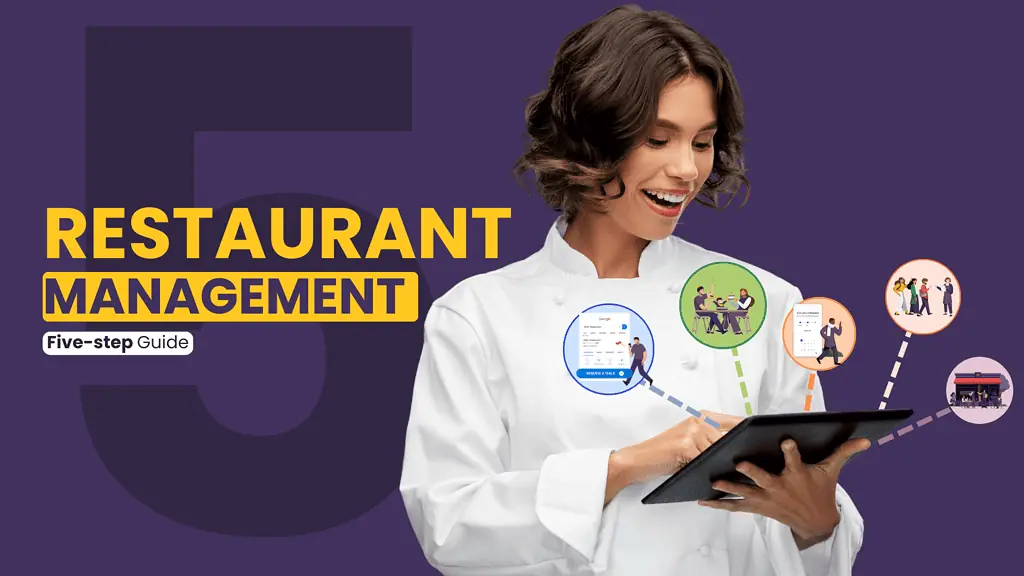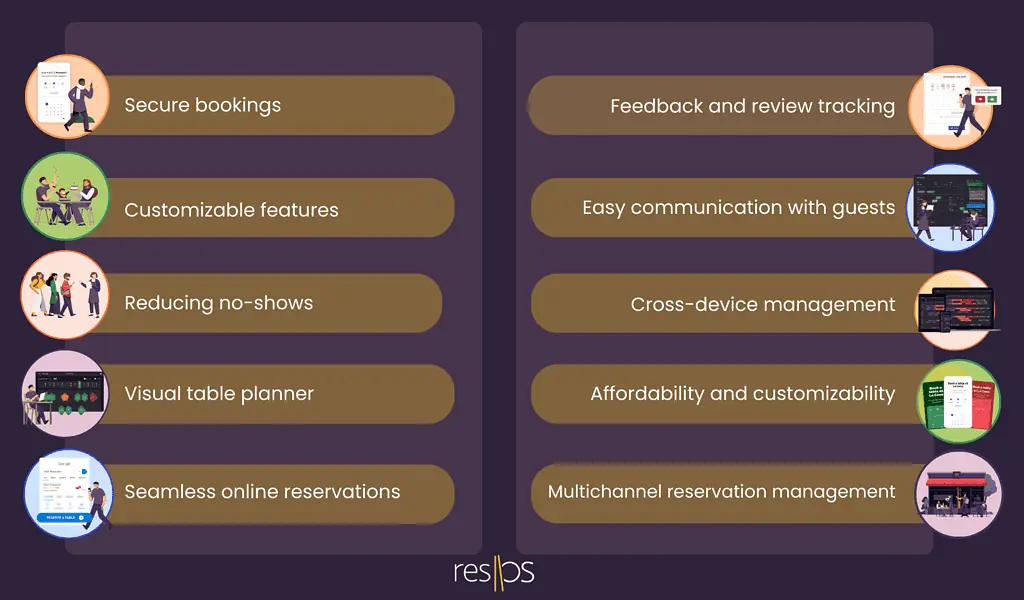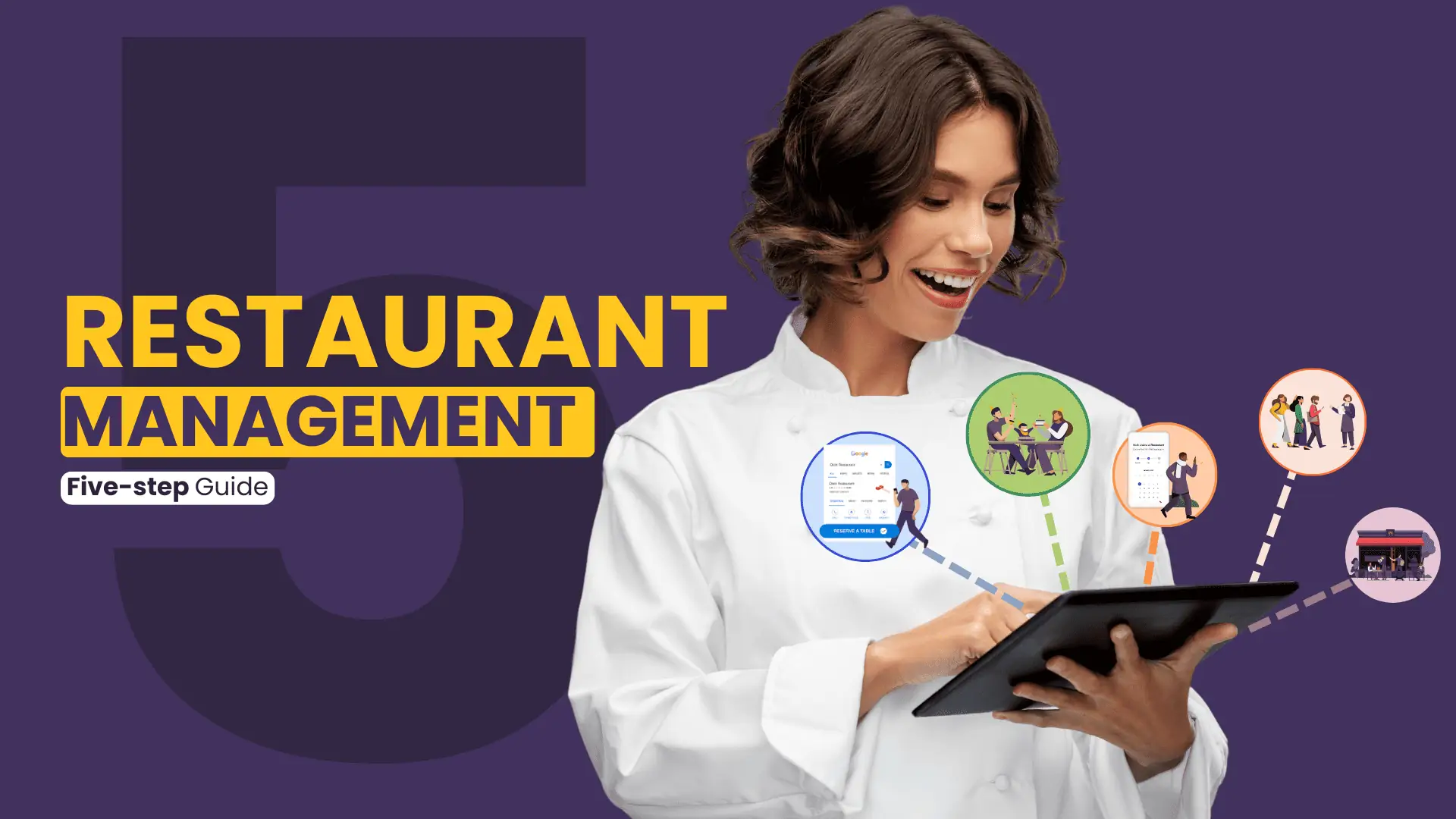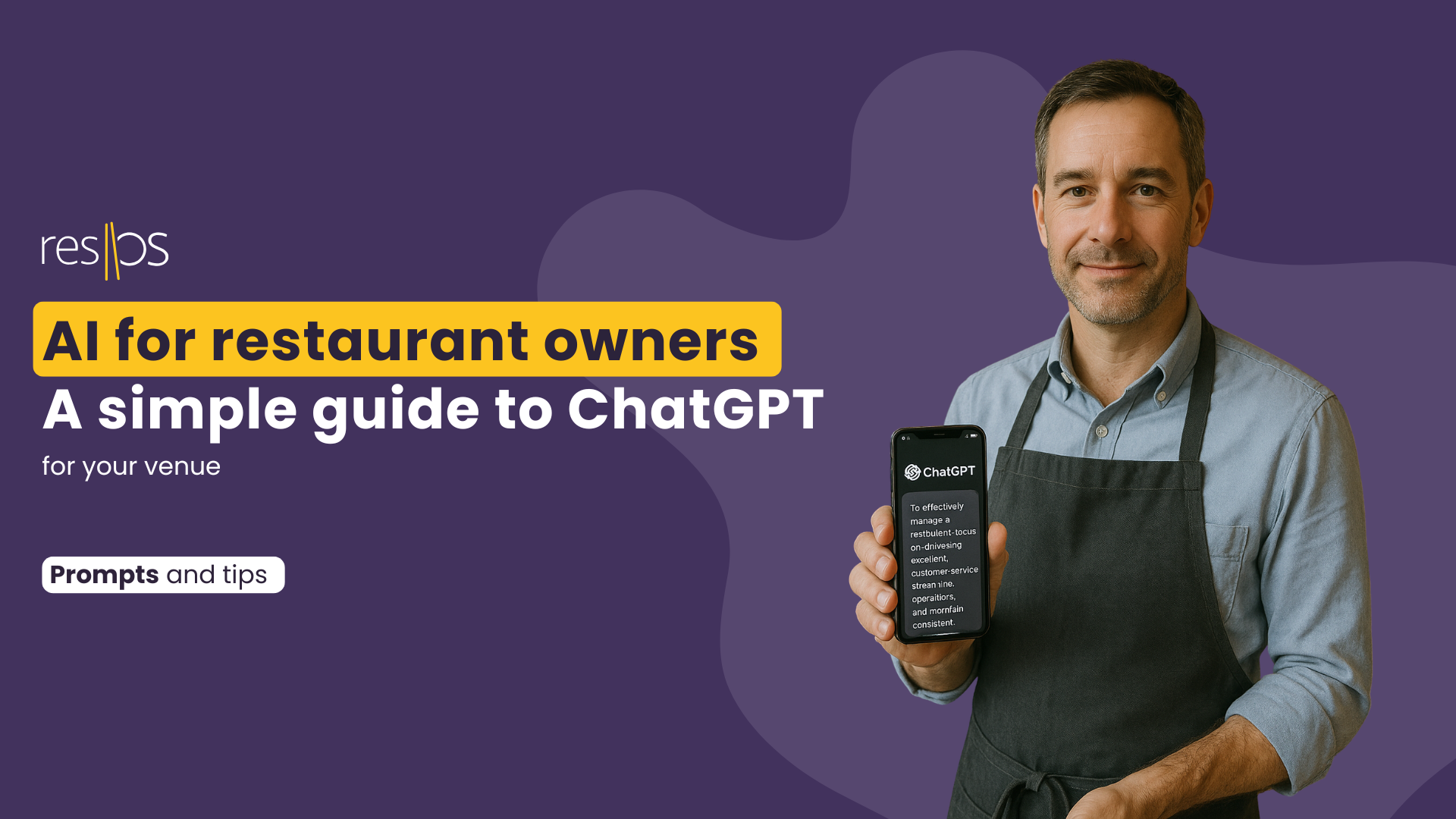
Table of Contents:
✔️ 1. Know your Restaurant’s operating costs
✔️ 2. Optimize guest management with a restaurant management system
✔️ 3. Essential features of a restaurant management system
✔️ 4. Managing your restaurant effectively
✔️ 5. Focus on your staff and customer service
1. Know your Restaurant’s operating costs
To run a successful restaurant, understanding your operating costs is paramount. This involves gaining a comprehensive overview of both fixed and variable expenses that impact your bottom line.
Identify and understand expenses:
- Gain a comprehensive overview of your restaurant’s operating costs, including fixed (e.g., rent, salaries, license fees) and variable (e.g., food, utilities) expenses.
Fixed expenses are essential costs that remain constant, such as rent, permanent staff salaries, license fees, and insurance premiums. Identifying these expenses is crucial for sound financial planning.
On the other hand, variable expenses depend on your restaurant’s activity levels, including food and beverage costs, utilities, hourly wages for part-time staff, and inventory expenditures. Managing variable costs effectively is vital due to their sensitivity to business fluctuations.
Analyze financial health:
- Assess your restaurant’s financial health to make informed decisions and identify areas for improvement.
Once you have a clear understanding of your restaurant’s expenses, it’s time to assess its financial health. Regular financial analysis provides insights into your restaurant’s performance, identifies strengths, and pinpoints improvement areas.
Read more about Restaurant Business Plan 👈 here
When you check out your financial statements, you get to see important factors like gross profit margin, operating expenses as a percentage of revenue, and break-even point. It’s like getting a peek into your restaurant’s financial health, which helps you make smarter decisions for future growth. Pretty cool, right?
Example: Keeping track of rent, labor costs, and food expenses can help you identify potential areas for cost-saving measures.
2. Optimize guest management with a restaurant management system

Making sure your guests have a fantastic dining experience is super important! To achieve that, a restaurant management system can be your ultimate sidekick. It streamlines operations and keeps your customers happy and satisfied.
Streamline reservations
- Invest in a user-friendly restaurant management system to handle online table reservations efficiently.
Investing in a user-friendly restaurant management system, such as resOS restaurant booking system, enables you to handle online table reservations with ease and efficiency.
With just a few clicks, guests can make reservations from the comfort of their homes or while on the go. This not only enhances convenience for your patrons but also minimizes the chances of missed bookings and reduces the workload on your staff.
How can you optimize the way you manage the restaurant’s guests in an easy and efficient way?
- Real-time table planning: Utilize visual table planners to manage seating arrangements and staff shifts seamlessly.
By utilizing the visual table planners offered by the resOS restaurant booking system, you gain the ability to manage seating arrangements and staff shifts in real-time. With a comprehensive view of your restaurant’s layout and occupancy, you can swiftly make well-informed decisions to optimize table allocation, thereby maximizing seating capacity and revenue potential.
This empowering feature enables your team to efficiently handle walk-in guests and reservations seamlessly.
3. Essential features of a restaurant management system

Having a solid restaurant management system with the right features can really boost your restaurant’s success. With these functionalities in place, you’ll enjoy smoother operations and provide your customers with an even better experience:
Secure bookings: Implement reservation deposits or prepayments through your restaurant management system, like resOS, to reduce the number of no-shows.
Customizable features: A robust system like resOS provides customizable options, such as adjusting opening and closing hours, offering multilingual support, and tailoring the app to meet your specific business needs.
Reducing no-shows: By keeping track of previous “bad” guests and implementing reservation deposits, you can significantly reduce no-shows, saving your restaurant time and money.
Visual table planner: A visual table planner simplifies table management for your staff, allowing them to handle different seating, staff breaks, and shift changes with ease.
Seamless online reservations: A restaurant management system enables you to create bookings and efficiently communicate with guests. Additionally, offering reservation and order options through a user-friendly app enhances accessibility and guest convenience.
Feedback and review tracking: By gathering feedback and insights from guests, you can better understand their preferences and improve your restaurant accordingly.
Read more about Feedback feature 👈 here
Easy communication with guests: Efficient communication with guests is essential to avoid misunderstandings. A reliable system facilitates seamless communication between your restaurant and its patrons.
Cross-device management: With the capability to manage reservations on computers, tablets, and smartphones, your team can collaborate effortlessly, ensuring a smooth workflow.
Affordability and customizability: Opt for a cost-effective solution like resOS, which offers a free version. This user-friendly system can be tailored to suit your restaurant’s specific requirements and size.
4. Managing your restaurant effectively

Running a successful restaurant hinges on effective management. You’ve got to juggle maintaining top-notch standards while optimizing resources. Here are some essential practices to nail your restaurant management:
Budget review
- Regularly review your budget and monthly expenses to ensure efficient allocation of resources.
A well-planned budget is the backbone of your restaurant’s financial stability. Regularly review your budget and monthly expenses to ensure that resources are allocated efficiently. This helps identify areas where you may be overspending or areas that require additional investment.
Take a close look at your restaurant’s budget and monthly expenses. Identify areas where you can cut costs without compromising quality. Look for opportunities to renegotiate contracts or find more cost-effective suppliers.
Splitting monthly costs: On average, a restaurant’s monthly costs are divided as follows:
- Rent & utilities: approximately 5-10% of total expenses, covering rent, electricity, water, internet, cable, phone, and management systems.
- Marketing cost: Around 10-20% of total expenses, including marketing, communications, social media, and advertising.
- Labor costs: About 30% of revenue, which includes staff salaries and management salaries accounting for 10%.
- Food cost: Approximately 25-40% of food sales, depending on your menu and supplier choices.
- Miscellaneous expenses: About 10-15% of total expenses, accounting for unforeseen repairs and replacements.
Save on costs and enhance efficiency: Implement strategies to save money and improve the overall efficiency of your restaurant. Train your employees to be efficient and provide excellent service, which can result in faster turnaround times and increased customer satisfaction.
Employee training and support
- Invest in your staff’s training and well-being to create a motivated and efficient team.
Your staff members are the heart of your restaurant! When you invest in their training and well-being, you create a super-motivated and efficient team. This awesome crew plays a big role in your restaurant’s success. By offering training programs that focus on top-notch service, culinary skills, and delightful customer interactions, you’ll wow your guests and earn their loyalty.
Moreover, providing ongoing support and recognition to your staff nurtures a positive work environment. Employees who feel valued and appreciated are more likely to be engaged and committed to delivering exceptional service. Employee morale and teamwork improve, leading to a more pleasant dining experience for customers.
- Example: Implementing a staff training program to enhance service standards and boost team morale.
5. Focus on your staff and customer service
Focusing on your staff and providing excellent customer service are pivotal aspects of a thriving restaurant. By prioritizing your employees’ well-being and professional growth, you create a positive work environment that translates into exceptional service for your guests.
Employee recognition
- Employee recognition: Acknowledge and reward your employees’ hard work and dedication.
Boost morale and motivation: Recognize hard work! Verbal praise, thank-you notes, or public acknowledgment during staff meetings foster appreciation. Go further with an “Employee of the Month” program, offering rewards like gift cards, bonuses, or extra time off. Encourage excellence!
Employee growth opportunities
- Offer growth opportunities and advancement paths to retain valuable team members.
Retain employees, and invest in growth! Offer career advancement, cross-training, workshops, and mentorship. Foster loyalty and success in your restaurant!
How can we create a strong sense of teamwork and inclusivity?
Here are some examples of strategies to ensure a happy staff:
- Rewards: Show appreciation by offering rewards like gift cards, gifts, or something valuable for their hard work and dedication.
- Bonus check: Consider providing periodic bonus checks as a special incentive for exceptional performance.
- Employee of the Month: Implement an “Employee of the Month” program to publicly recognize outstanding team members and celebrate their achievements.
- Open-book management: Foster a culture of transparency and loyalty within the team by sharing important business information openly.
- Educational courses: Offer educational courses to help your staff enhance their skills and knowledge, supporting their professional growth.
- Promotions and added responsibilities: Recognize potential in your employees and offer promotions or additional responsibilities to encourage their development.
- Staff activities and parties: Organize staff activities, parties, and team-building events to build camaraderie and strengthen the team bond.
- User-friendly systems: Provide easy-to-use and user-friendly systems that simplify tasks and make their work more efficient and enjoyable.
With this powerful 5-step guide at your disposal, you’ll be a restaurant management maestro! Master your operating costs, dazzle guests with a user-friendly management system, and savor the essential features.
With effective management practices and a happy, motivated staff, you’ll dish out delightful customer service that keeps diners coming back for seconds. Embrace these tips, and your restaurant will be the talk of the town, setting the stage for unrivaled success! Bon appétit! 🍽️🌟



